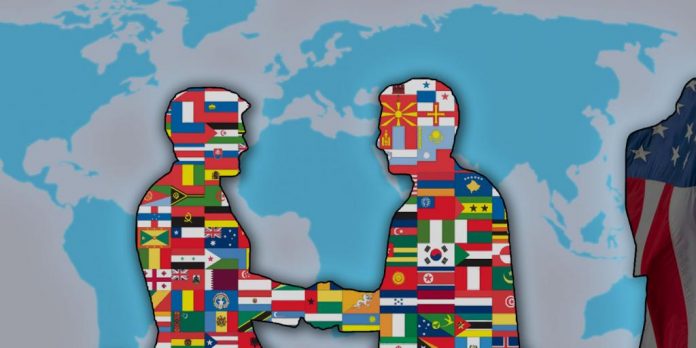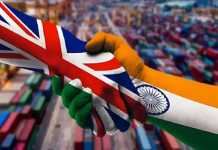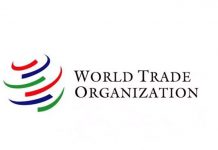This article is written by Pratap Alexander Muthalaly, a student of Government Law College, Trivandrum. This article analyses the intricacies of multilateral trade rules in detail and the use of special and differential treatment in particular.
Table of Contents
Introduction
Multilateral agreements are a major part of today’s global trade infrastructure. A multilateral trade agreement involves three or more countries who wish to regulate trade between their respective nations without any form of discrimination. Agreements of this nature are usually intended to lower trade barriers between participating countries and, as a result, increase the degree of economic integration and cooperation between the various nations. Under the WTO framework developing countries are given special rights and privileges commonly called special and differential treatment. These provisions are central to the functioning of world trade in the present day.
What is the multilateral framework of International Law?
The multilateral framework of international law in the trade sphere has been laid out through a series of agreements which started with the General Agreement on Tariffs and Trade and was continued with subsequent agreements formed in the following rounds, most notably the Uruguay round. Listed below, are some of the most notable laws that govern international trade.
The General Agreement on Tariffs and Trade (GATT)
The General Agreement on Tariffs and Trade was the first among a host of multilateral trade agreements. It was a catalyst for the formation of a multilateral trade framework in international law. GATT is a legal agreement between a multitude of countries, formed with the overall purpose of promoting international trade by reducing or eliminating trade barriers such as tariffs or quotas.
The General Agreement on Trade and Services (GATS)
The General Agreement on Trade in Services (GATS) was formulated as a result of the Uruguay Round negotiations. This treaty was created to continue building on the foundations of a multilateral trading system laid by GATT. It was primarily focused on spreading the GATT ethos to the service sector. This is to provide a framework similar to the one established by GATT in merchandise trade.
The Agreement on Trade-Related Aspects of Intellectual Property Rights (TRIPS)
This agreement too was formed as a result of the Uruguay round. Through TRIPS a minimum standard has been set for the regulation of different forms of intellectual property by nations. TRIPS requires that all WTO members provide copyrights and trademarks for goods and services in their country. This includes a wide assortment of products ranging from software and industrial designs to more intricate creations.
The Agreement on Agriculture
The WTO Agreement on Agriculture is centred into 3 broad provisions of agriculture and trade policy. This refers to market access, domestic support and export subsidies. Continuous and gradual reduction of tariffs was a central element of market access. It also involved the conversion of non-tariff barriers to tariff duties. Domestic support involves a guaranteed minimum support price. This was split into three, that is green box, blue box and amber box subsidies. Export subsidies especially for developing countries was built on the mechanism of special safeguard mechanisms, which provides some protection for developing markets in the case of abnormal price surges.
The Agreement on Technical Barriers to Trade
This agreement was formulated to better regulate trade. The Technical Barrier to Trade (TBT) exists primarily to ensure that technical regulations, standards, testing, and certification procedures do not create any unnecessary obstacles to trade. That is, they do not hinder or get in the way of international trade or hinder its smooth functioning.
The Agreement on Trade-Related Investment Measures (TRIMS)
TRIMS is responsible for covering the rules and practices that countries must adhere to regarding the treatment of foreign investors, this includes foreign investors in private health delivery and medicine production.
The Agreement on Customs Valuation
The WTO agreement on customs valuation was set up to facilitate a fair, uniform and neutral, non-biased system for the valuation of goods for customs purposes. That is a system that does not favour any party over the other. This system strives to work in consideration of the commercial realities. Furthermore, it outlaws the use of arbitrary or fictitious customs values.
Explain multilateral negotiations
Essentially multilateral trade negotiations are what precede multilateral trade agreements or rather give rise to them, through various discussions like the ‘rounds’ held by the WTO and GATT before it.
In the process of coming to a consensus on what might eventually end up being a trade deal, there are several negotiations back and forth in regards to demands made by the different parties. This might even involve the renegotiation of existing agreements when certain nations feel that it is not in their best interests anymore. The recent renegotiation of NAFTA to create the United States–Mexico–Canada Agreement (USMCA) is a perfect example of this.
According to statements from the Trump administration, NAFTA had led to trade deficits, factory closures, and job losses for the United States. The deal has also been blamed over the years for job losses in traditionally heavy manufacturing states such as Michigan, and for holding back wage increases for the existing jobs in that sector. Due to all these issues and grievances, it was agreed that the three pirates involved (the USA, Canada and Mexico) agreed to negotiate a more workable trade deal. The new deal is said to have satisfied the American demand for stricter labour laws. Moreover, there have been stronger environmental protections put in place. That is the agreement provided for over 600 million dollars to solve vital issues like the sewage spillovers from Tijuana to San Diego. Other changes include an increase in the manufacture of vehicle parts from the region and also greater market access for farmers.
Difference between bilateral and multilateral trade
The main point of difference between multilateral and bilateral trade agreements is in the number of participants. Multilateral trade agreements involve three or more countries without any form of discrimination between the various parties involved, meanwhile, bilateral trade agreements are those which consist of only two countries. Both countries may enjoy certain advantages in a bilateral agreement. In some cases, they may have favourable import quotas which are not available to other trading partners and can only be availed by the two nations who have agreed in the said bilateral contract. The Australia – New Zealand Free Trade Agreement and the Canada – United States FTA are some prime examples of what we call bilateral agreements. In general, bilateral trade agreements only provide parties with access to limited markets as there are only two nations involved in the agreement.
On the other hand, multilateral agreements have a much larger scope and have the capacity to cover a significantly larger region. However, multilateral talks and even their eventual agreements often tend to be unpredictable. It is often the case that over the years, some parties might get dissatisfied with the terms of the agreement. A perfect example of this was the NAFTA. This might result in them backing out which in turn could cause large scale economic upheaval for their partners. Comparatively bilateral agreements are far less risky and the negotiations involved often get concluded at a brisk pace. Nevertheless, the scope for dividends is limited in this form and that is why most countries look to form multilateral agreements, despite the risk of facing difficulties in negotiation.
Special and differential treatment provisions
Within the WTO framework are certain special provisions which give developing countries a host of special rights and privileges. Moreover, it also gives the developed nations the option of treating developing countries more favourably than their other WTO partners. According to the world trade organization’s official website.
The special provisions include:
- Longer periods for implementing agreements and commitments,
- Measures to increase trading opportunities for developing countries,
- Provisions requiring all WTO members to safeguard the trade interests of developing countries,
- Support to help developing countries build the capacity to carry out WTO work, handle disputes, and implement technical standards, and
- Provisions related to least-developed country (LDC) Members.’
Important legal provisions- GATT
There are numerous articles and legal principles within GATT. These can be best summarised through the principles listed below.
Most-favoured nation
The Most Favoured Nation rule is a central part of GATT. It has been Stated in Article I of the GATT2, that if one GATT signatory grants to another country “more favourable treatment” (such as a reduction in the customs duty payable on imports of a particular product), it must immediately and unconditionally give the same treatment to imports from all signatories. In other words, all GATT/WTO members are within their rights to receive the most favourable treatment given by any member.
Tariff reductions and bindings
The second core principle of GATT is that the members undertake commitments in which they state the maximum level of import duty or other charge or restriction that they will apply to imports of specific types of goods.
National treatment
The rule of national treatment, in Article III of the GATT, is also very important. It essentially acts in tandem with the MFN rule. This principle is pivotal in pushing forward the policy of non-discrimination between the member states and also acts to provide guarantees like for example national compliance with the non-discrimination rule in foreign trade. Simply put, it prohibits favouritism for local goods when compared to foreign producers.
Transparency
Central to a transparent system of trade is the need to have a stable system of import protection, this is so that the barriers on trade can be reduced through the process of negotiations. The GATT has therefore advocated strongly for limited use of quotas, except in some specific sectors such as agriculture.
Evolution of S&DT in GATT
Special and differentiated treatment is a vital part of world trade and by that extension GATT as well. Primarily used as a tool to support developing countries and in some cases also help them better integrate into the world trade network, Special and Differentiated Treatment has been at the epicentre of discussion in many a trade round.
The focus and interpretation of S&D provisions have undergone quite a bit of change over the years. From GATT to Uruguay Round to the formulation and eventual establishment of the WTO in 1995, S&D provisions have undergone a host of changes. Before the Uruguay Round, the primary goal behind S&D treatment was to recognize the difficulties and barriers to development faced by many of the developing countries and in turn offer them the necessary allowances and freedoms to pursue policy options best suited for industrialization and speedy economic development. However, this ideal witnessed a gradual shift which culminated in the Uruguay Round. In this set of discussions, the focus was much more on recognizing the special problems that developing countries were facing and could face in the implementation of the various terms and conditions of the agreement.
This aforementioned issue was once again highlighted during the Doha round of negotiations. It was argued that to properly uplift developing countries to a more favourable position, there was a need to strengthen the existing S&D provisions. There was a consensus among member nations that S&D treatment provisions should be reviewed, and that they should be strengthened and made more concise and effective in practice.
One area of contention here was how developing countries could be properly identified. A consistent complaint of countries that had already touched the so-called ‘developed’ mark was still availing of the benefits of their erstwhile developing status. This school of thought has spurred countries like the US to argue that many developing countries are taking the advantage of the provisions and the present trade infrastructure. That is, they have declared themselves as developing countries under their own volition and have become significant shareholders in global markets.
Scope of flexibilities under mega RTA
Mega Regional Trade Agreements (MRA) refers to deeper high-level partnerships between countries or regions with a major share of world trade and foreign direct investment (FDI). Beyond simply increasing trade links, the deals aim to further integrate parties and improve and create uniform regulations between them. Notable agreements of this nature include:
Trans-Pacific Partnership (TPP)
This was originally a four-nation free trade agreement between Myanmar, Chile, New Zealand and Singapore; at present, the TPP has expanded to include: the US(formerly), Australia, Canada, Japan, Malaysia, Mexico, Peru, and Vietnam.
The TPP aims to achieve significant amounts of liberalization of both goods and services and aims to ensure the comprehensive coverage of trade in a wide variety of areas ranging from basic investment to non-tariff measures.
Transatlantic Trade and Investment Partnership (TTIP)
The TTIP was a proposed project launched in 2013 to strengthen trade ties between the US and the EU. The aim of this agreement was mainly to remove trade barriers and facilitate smoother trade relationships between these two major global powerhouses.
Both of the above-mentioned trade agreements have faced difficulties, with the US backing out of the TPP and scrapping the TTIP. The reason cited was that these deals would be detrimental to American workers and farmers. Furthermore, deals of this nature are argued to go against the very nature of multilateralism as they could form potential trade blocs. Finally, the lack of inclusion of other major players like China has only further hindered the possibility of these two deals being reached.
The continuing relevance of S&DT in agriculture
Agricultural trade continues to be a mainstay in many countries and continues to play a major role in domestic agricultural production and employment. The global trading system also plays a very important role in ensuring the continuity of global food security. The best example of this is the efforts taken in ensuring that temporary or lengthy food deficits that arise from harsh and unpredictable climatic and other unforeseen externalities are constantly mitigated by the supply chain mechanism in place.
As mentioned earlier, the Agreement on Agriculture is centred into 3 broad provisions. That is market access, domestic support and export subsidies. Continuous and gradual reduction of tariffs is a central feature of market access. Other related methods include the conversion of non-tariff barriers to tariff duties.
Meanwhile, the provision of Domestic support involves a guaranteed minimum support price. This policy mechanism is split into three, that is green box, blue box and amber box subsidies. Green Box subsidies refer to the amounts spent on Government services like research, disease control, infrastructure and food security. Meanwhile, subsidies in the Blue box category aim to limit production by imposing production quotas or making farmers set aside a part of their land. Finally, Amber box subsidies are those subsidies which alter the flow of international trade by making products of a particular country cheaper in comparison to similar products in another country. Examples of such subsidies include input subsidies such as electricity, seeds, fertilizers, irrigation, minimum support prices etc. Export subsidies especially those intended for developing countries were initially built on the framework of special safeguard mechanisms, which provides some protection for developing markets in the case of abnormal price surges.
In recent years WTO members have taken steps to reform the agriculture sector and to address the subsidies and high trade barriers that distort agricultural trade. Members continue to conduct talks and deliberations to push for further reform. In fact, in 2015, a historic decision was reached through a strong consensus to abolish agricultural export subsidies and to set rules for other forms of help. Despite this, there are still contentions over the nature of the new provisions to be initiated. With developing countries demanding minimal reductions and changes from the current regime.
Country-wise relaxations on import and export liberalization
For a long time now, liberalization has remained one of the most divisive areas of discussion. In a trade sense, liberalization essentially involves the removal or reduction of restrictions or barriers on the free movement of goods and services between various countries. These barriers include both tariffs (duties and surcharges) and also certain non-tariff barriers.
Critics of trade liberalization argue that this policy can lead to job loss since cheaper products will flood the host nation’s domestic market. Furthermore, dissidents have often voiced concerns of the possibility of the goods being of inferior or suspect quality or rather merely not up to the necessary standards. Meanwhile, supporters of trade liberalization argue that in the long run, the policy has several benefits. This includes lowers consumer costs, increases efficiency, and stimulation of better economic progress.
Other arguments for Trade liberalization include the belief that it promotes free trade, which essentially allows nations to trade without the usual barriers or tariffs that hold the process back. Proponents also insist that trade liberalization gives producers the platform to become more efficient through market competition and eventually become specialists in their various fields. Countering this school of thought, however, is the argument that excessive competition leads to the closing of many high potential sunrise industries and also traditional sectors that a country cannot do without.
Implications of North-South preferential agreement
A preferential trade agreement, PTA is a trading bloc that provides preferential access to certain products to the various nations that are party to the agreement. This is done by reducing tariffs rather than going all the way to abolish them.
The massive increase in preferential trade agreements (PTAs) has been a notable feature of international trade policy in recent times. PTAs are an exception to the general most-favoured-nation (MFN) provision of the WTO, by which all WTO members impose on each other the same non-discriminatory tariff.
A Regional Trade Agreement (RTA) is a good example of what defines a PTA. In the United States certain industries, such as automobile and electronics manufacturers, prefer RTAs because such agreements allow these industries to exploit low manufacturing costs in other countries in the region while avoiding the competition from foreign rival producers that they would have to deal with in a multilateral agreement. A notable area of controversy surrounding PTAs is that they clash with the WTO ethos. Especially their most favoured nation policy, which holds that no one should enjoy preferential treatment in international trade and that tariffs should be the same for everyone. However, despite this ideological clash, PTAs are allowed under the Article XXIV exception of the WTO charter.
Conclusion
Despite the growing rise of preferential trade agreements, the WTO/GATT structure continues to stand strong. Multilateral trade agreements continue to play a central role in the arena of global trade. The same can be said for unique instruments like special and differentiated treatments. That is, despite the demands from many quarters to restructure these specific nations, S&D treatment is crucial for developing countries. This is especially true in the case of the agricultural sector. Therefore it must persist in some form or the other.
References
- https://www.wto.org/english/tratop_e/devel_e/dev_special_differential_provisions_e.htm
- https://openknowledge.worldbank.org/handle/10986/19819
- http://www.fao.org/3/Y3733E/y3733e0c.htm
- https://www.odi.org/resources/docs/4679.pdf
- https://www.wto.org/
LawSikho has created a telegram group for exchanging legal knowledge, referrals and various opportunities. You can click on this link and join:
 Serato DJ Crack 2025Serato DJ PRO Crack
Serato DJ Crack 2025Serato DJ PRO Crack











 Allow notifications
Allow notifications



